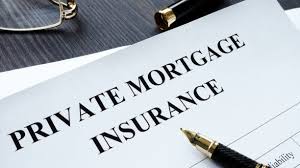
Private Mortgage Insurance in the journey to homeownership, many buyers encounter the term Private Mortgage Insurance (PMI). While PMI can be a crucial aspect of securing a mortgage, it is often misunderstood. This article aims to provide a comprehensive overview of PMI, covering its purpose, how it works, costs involved, types, and alternatives. Whether you’re a first-time homebuyer or simply seeking to understand more about your mortgage options, this guide will equip you with the knowledge you need.
What is Private Mortgage Insurance (PMI)?
Private Mortgage Insurance is a type of insurance that lenders require from homebuyers who are unable to make a substantial down payment—typically less than 20% of the home’s purchase price. PMI protects the lender in case the borrower defaults on the loan. While PMI adds an additional cost to your monthly mortgage payment, it allows buyers to purchase homes with lower down payments, making homeownership more accessible.
Why is PMI Necessary?
The rationale behind PMI stems from the increased risk that lenders face when borrowers put down less than 20%. A smaller down payment means the borrower has less equity in the home, which can lead to a higher likelihood of default. PMI mitigates this risk, encouraging lenders to offer loans to a broader range of buyers.
How Does PMI Work?
PMI is usually required for conventional loans, which are not insured by the federal government. Here’s a breakdown of how it works:
- Eligibility: Generally, PMI is required for borrowers with a down payment less than 20%. Some lenders might also require PMI if the borrower’s credit score is below a certain threshold.
- Payment Structure: PMI can be paid in several ways:
- Monthly Premiums: Added to the monthly mortgage payment.
- Upfront Premiums: Paid at closing.
- Combination: A portion paid upfront and the rest monthly.
- Cancellation: Once the borrower reaches 20% equity in their home, they can request to cancel PMI. The Homeowners Protection Act mandates that lenders automatically cancel PMI when the borrower reaches 22% equity based on the original purchase price or appraised value.
- Refunds: If you pay PMI upfront, you may be eligible for a refund if you sell your home or refinance before the insurance coverage period ends.
Cost of PMI
The cost of PMI can vary widely based on several factors, including:
- Loan Amount: Higher loan amounts generally result in higher PMI costs.
- Down Payment Percentage: A smaller down payment typically results in higher PMI premiums.
- Credit Score: Borrowers with higher credit scores may qualify for lower PMI rates.
- Type of Loan: Different types of loans may have different PMI structures and costs.
On average, PMI costs range from 0.3% to 1.5% of the original loan amount annually. For example, on a $200,000 mortgage, PMI could cost between $600 to $3,000 a year, or $50 to $250 a month.
Types of PMI
PMI comes in different forms, each with its own characteristics:
1. Borrower-Paid Mortgage Insurance (BPMI)
This is the most common type of PMI, where the borrower pays monthly premiums until they reach the required equity level. BPMI can be canceled when the borrower reaches 20% equity.
2. Lender-Paid Mortgage Insurance (LPMI)
With LPMI, the lender covers the cost of PMI, but this often comes at the expense of a higher interest rate on the mortgage. While borrowers don’t pay PMI directly, the increased interest can result in higher overall loan costs.
3. Single-Premium Mortgage Insurance
In this case, the borrower pays a lump sum for PMI at closing. This can be beneficial for those who prefer to avoid monthly premiums. However, if you sell or refinance before reaching 20% equity, you may not receive a refund.
4. Split-Premium Mortgage Insurance
This hybrid approach combines elements of BPMI and single-premium options. Borrowers pay part of the premium upfront and the remainder monthly. This can be appealing for those who want to reduce their monthly costs.
How to Calculate PMI
Calculating PMI can be straightforward. Lenders typically provide a PMI calculator, but you can estimate it using this formula:
- Determine the loan amount (for example, $200,000).
- Find the PMI rate (for example, 0.5%).
- Multiply the loan amount by the PMI rate:
- $200,000 x 0.005 = $1,000 annual PMI.
- Divide by 12 to find the monthly PMI:
- $1,000 / 12 = approximately $83.33 per month.
Keep in mind that PMI rates can vary, so it’s essential to check with your lender for specific rates applicable to your situation.
Pros and Cons of PMI
Pros
- Lower Down Payments: PMI enables buyers to secure a mortgage with a down payment of less than 20%, making homeownership more attainable.
- Access to Homeownership: For many, PMI is the stepping stone to purchasing a home that they might not have otherwise been able to afford.
- Potential for Appreciation: With PMI, buyers can enter the housing market sooner, allowing them to benefit from home appreciation.
Cons
- Additional Costs: PMI increases monthly payments, which can strain a buyer’s budget.
- Not Beneficial to Borrowers: Unlike homeowners insurance, PMI protects the lender, not the borrower. If the borrower defaults, they won’t receive any benefits.
- Can Delay Homeownership: Some buyers might delay purchasing a home until they can save a larger down payment to avoid PMI altogether.
Alternatives to PMI
If PMI is not appealing, there are alternatives to consider:
1. Higher Down Payment
Saving for a down payment of 20% or more eliminates the need for PMI. While this may require additional time and effort, it can result in substantial long-term savings.
2. FHA Loans
FHA loans, backed by the Federal Housing Administration, have lower down payment requirements (as low as 3.5%) but come with their own mortgage insurance premiums, which are often more favorable than PMI.
3. VA Loans
Veterans Affairs (VA) loans do not require PMI and offer competitive interest rates, making them an excellent option for eligible veterans and active-duty service members.
4. USDA Loans
For rural homebuyers, USDA loans offer 100% financing with no down payment requirement, thus eliminating the need for PMI.
5. Piggyback Loans
This strategy involves taking out two mortgages—one for 80% of the home’s value and a second for 10%—avoiding PMI. However, this option can be complicated and may come with higher overall costs.
Conclusion
Private Mortgage Insurance plays a significant role in the home-buying process, particularly for those with limited down payment capabilities. While it comes with additional costs, PMI opens the door to homeownership for many individuals and families. Understanding the intricacies of PMI, including its types, costs, and alternatives, can empower buyers to make informed decisions.
As the real estate landscape continues to evolve, it’s essential to stay informed about the options available to you. Whether you choose to embrace PMI or explore alternative financing options, knowledge is your best ally in the quest for homeownership .For more detail please visit techwebinsights.com





